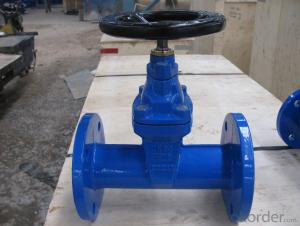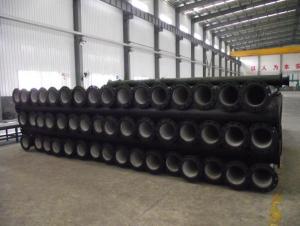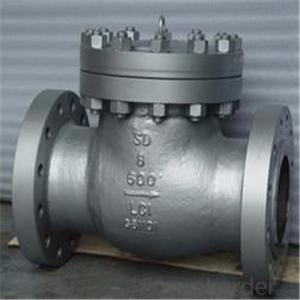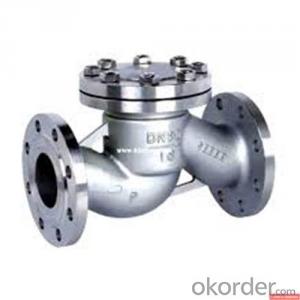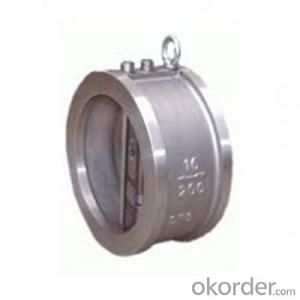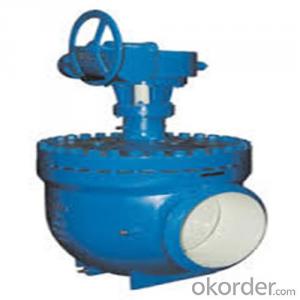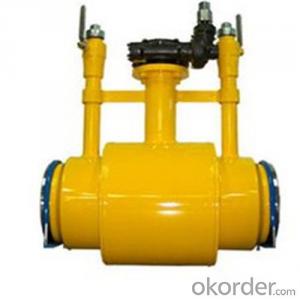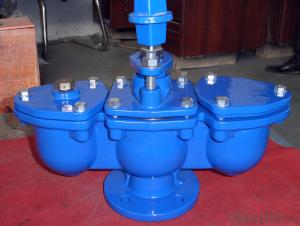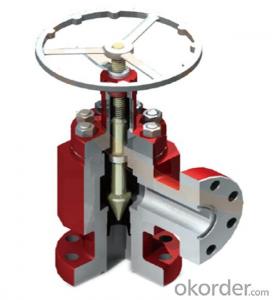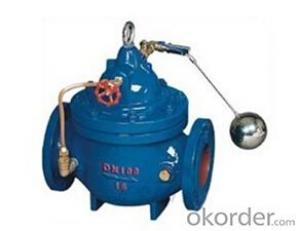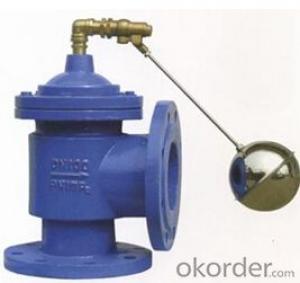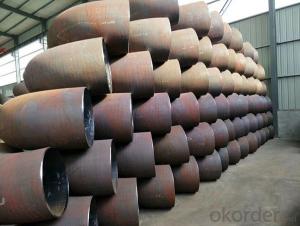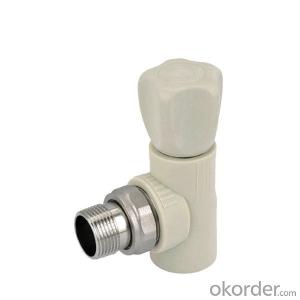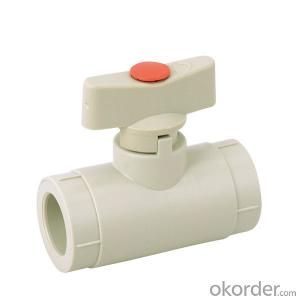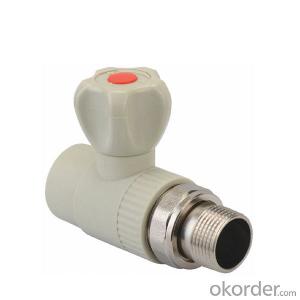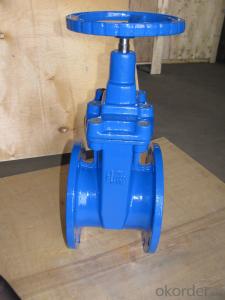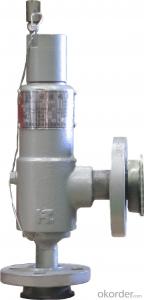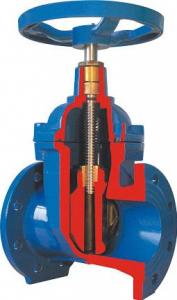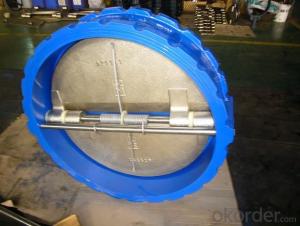Non-rising Stem Resilient Seated Gate ValveDIN3352 F5
- Loading Port:
- China Main Port
- Payment Terms:
- TT OR LC
- Min Order Qty:
- -
- Supply Capability:
- -
OKorder Service Pledge
OKorder Financial Service
You Might Also Like
Type: | Non-Rising Stem |
Material: | Body: Cast Iron / Ductile Iron Wedge: Cast Iron / Ductile Iron Encapsulated with EPDM Seat: EPDM / NBR Shaft: SS410 Stem Nut: Brass O-ring: EPDM, NBR Wedge Nut: Brass / Bronze Hand Wheel: Ductile Iron
|
Operator: | Hand Wheel / Bevel Gearing / Square head / Electric actuator |
Face to Face: |
BS5163: 1986, DIN 3202 F4-F5, JIS B2002, ANSI B16.10
|
Flange: | BS4504, DIN 2532, JIS B2212, ANSI B16.10/ANSI B16.50
|
Working Pressure: | 16 Bar(200 PSI) |
Design and Manufacturer Standard : | BS5163, DIN 3352, JIS B2043 |
Test Standard: | API 598 BS6755 DIN 3230 JIS B2003 |
Application: | Water works, Sewage, Public facilties, Building industry, Petroleum, Chemical, Steel, Metallurgy, Paper Making Industry, Foods, Beverage, HVAC |
| | | | ||||||||
| | | | ||||||||
| | | | ||||||||
| | | | ||||||||
| | | | ||||||||
| | | | ||||||||
| | | | ||||||||
| | | | ||||||||
- Q:We've got a one-handled faucet for the tub/shower and it has that pressure-balancing mechanism. We have it set, I think, so that we can take the hottest showers possible, because our water heater lacks enthusiasm. However, when I want to draw a bath for the baby, I need it to be lukewarm - and I have to turn it almost OFF to get the water to be even tepid. I can't get cold water out unless it's only trickling. As far as I can tell, our cold water pressure isn't different from the hot (bathroom faucets are 2 handles and H C seem to be about the same pressure). Is there a way to adjust the valve in the shower so I can get both the hottest possible, and the coldest possible water at full pressure?
- All major manufactures of valves have excellent customer service departments. Most of them also have great websites with lots of technical info. Note: You may try changing your shower head to one that is a higher flow or remove any flow restrictor that may be in the one you have now. This may allow you to have the valve set to a colder setting for the tub spout and should increase the hot when showering. Personally, I don't like these style valves. Too many problems like yours.
- Q:I need to make a ball valve that will open with no manual force but by a motor of some sort to spin it and release water. how do i make a ball valve controlled by preferably a motor or other CHEAP device. I need to do this for less that 20$
- It's a lot easier and cheaper to buy the valve at a hardware store than make it. You can probably get a motor and gear train from a hobby store. If it doesn't absolutely have to be a ball valve, you can get electric sprinkler valves from just about any home and garden supply. They're specifically designed to control water flow. Just hook it up to a power source and you're good to go. Addition: Just remembered, you can also get battery operated water control valves that connect between a faucet and a hose. I'm pretty sure they're ball valves internally. Prices vary, so shop around. Depending on how fancy you want it to be, they go for about $5.00 and up.
- Q:In place of actual valve oil, can I use WD40? How about baby oil? Are there any household products which work?
- A bottle of valve oil only costs $3-4, so next time you go to the music store, buy two bottles. Then you'll be set for a long time.
- Q:Water has been seeping out of the sprinklers closest to the anti-siphon valve. Water seeps out of the sprinkler even when the anti-siphon valve is manually closed and not connected electronically. I opened up the anti-siphon valve to inspect the diaphragm, but there is no debris nor it was damaged. To be sure, I switched the diaphragm chamber of the two anti-siphon valves (a suspected leaky one and another good working one), but leak persists from the same sprinklers. I think the leak is from the (float?) rubber seal at the bottom of the stem closing the inlet valve. My anti-siphon is a Hardie (or Irritrol) model 311A series.1) Is my troubleshooting and logic correct? What other components could have contributed to the leak described? 2) At what scenario will water be flowing out of the anti-siphon cap?3) How can I determine if my anti-siphon valve has a vacuum breaker? What is a vacuum breaker good for?4)Which brand makes the most reliable anti-siphon valve?
- Sprinkler Anti Siphon Valve Leaking
- Q:adjusting the overhead valves on briggs and stranton 14.5 engine
- Roll the engine over until the valve is completely closed. You can do this by watching the valve close, then turn the engine over until it just strats to raise. Now turn it back half way. Now losen the rocker arm and place a .003mm to .005mm filler gage between the push rod and the rocker. Tighten the rocker arm nut down so that the filler gage pulls out with a light drag. Do this with the other rocker and you are good to go.
- Q:will adding a bypass valve onto an air filter effect gas milage or horsepower?
- bypass valves are for cars with forced induction IEturbocharger,supercharger it allows the air that would normally be expelled into the atmosphere blow off valve and instead putting it back into the intake which helps with less lag in building boost again. If your car is not turboed or supercharged then forget it.
- Q:Tryin to figure out how many valves a 1992 vx has. 16 or 8?
- '92 Civics had single overhead cams (SOHC), so they have 8 valves. 1 intake valve and 1 exhaust valve per cylinder, so since there are 4 cylinders, that makes 8. Vehicles with dual overhead cams (DOHC) had 16, but Hondas had SOHC cams at that time. I'm really surprised how many people are saying 16. That is incorrect. I am positive. You cannot have 4 valves per cylinder (total of 16 valves) on a motor that has a single overhead cam.
- Q:We have a wall mounted shower head as well as a ceiling mounted shower head. Suddenly the turning valve for the wall mounted head does not work, only the ceiling one does. Is this stripped. Can it be repaired with a marble wall? I have a photo if needed. Thank you ahead of time. Patrick
- The mixing valve is in the handle that turns the water on. You don't need to take down the wall to get at it. The handle come off including any cover plate and the valve is right behind it. Be careful not drop/lose any screws or washers. They are small. The home center sells replacements for certain brands so get that information.
- Q:I go deer hunting with my dad and he has an artificial heart valve. It isn't too loud, but I can hear it about ten feet away if it's quiet enough. Is it possible that we haven't shot any deer yet because the deer can hear the valve and know to stay away?
- Wow, you must have really good ears. My friend has 2 heart valves which are ball and socket type and they click really loud, but I can only hear them with a stethescope. I doubt deer can connect that click with a human.
- Q:HI ever one i have a 1969 1500 beetle engine i have just but 1600 piston and barrows on it but when i but the rockers on i have no valve gap at all. ive wound out the adjusters all the way and i still can not get a feeler gauge between the rocker and the valve. Please help cheers Adam
- you MUST have the cylinder you are adjusting at TDC before adjusting the valves on that cylinder. take the dizzy cap off and rotate the engine clock-wise until the the rotor is pointing toward the #1 cylinder (the front at about 5 o'clock where the little notch in the case of the dizzy is) there is also a little V shaped notch in the crank pulley. this has to be aligned with the crack in the case at the top of the pulley. then take the valve cover off the right side of the motor and adjust the 2 valves toward the front of the engine (front is front of car) these are the intake and exhaust valves for the #1 cylinder. after you get them gaped to .006 snug the jam nut down. then rotate the crank EXACTLY 180 degrees counter-clockwise this will get you to TDC for #2. then adjust the back 2 valves on the right side of the motor (back is back of car) these are valves for #2 cylinder. then put the valve cover back on. rotate the engine another 180 degrees counter-clockwise, this will give you TDC for #3 which is the front left of the motor. adjust them and rotate the crank another and final 180 degrees counter-clockwise for #4 cylinder put the valve cover back on with new gaskets of course and you are done
1. Manufacturer Overview |
|
|---|---|
| Location | |
| Year Established | |
| Annual Output Value | |
| Main Markets | |
| Company Certifications | |
2. Manufacturer Certificates |
|
|---|---|
| a) Certification Name | |
| Range | |
| Reference | |
| Validity Period | |
3. Manufacturer Capability |
|
|---|---|
| a)Trade Capacity | |
| Nearest Port | |
| Export Percentage | |
| No.of Employees in Trade Department | |
| Language Spoken: | |
| b)Factory Information | |
| Factory Size: | |
| No. of Production Lines | |
| Contract Manufacturing | |
| Product Price Range | |
Send your message to us
Non-rising Stem Resilient Seated Gate ValveDIN3352 F5
- Loading Port:
- China Main Port
- Payment Terms:
- TT OR LC
- Min Order Qty:
- -
- Supply Capability:
- -
OKorder Service Pledge
OKorder Financial Service
Similar products
New products
Hot products
Hot Searches
Related keywords
